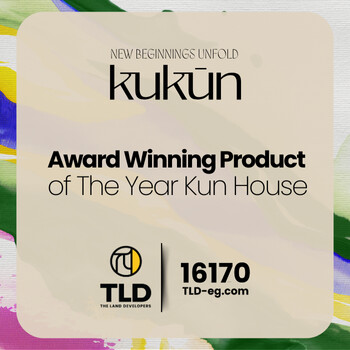1. Introduction to Symbols: Their Role and Significance in Human Culture
Symbols are fundamental elements of human communication, transcending spoken language to encode complex ideas, beliefs, and cultural values. They are universal across societies, appearing in ancient cave paintings, religious icons, national flags, and modern logos. For example, the peace symbol or the heart icon instantly convey specific meanings regardless of language barriers, illustrating their power to communicate on a cognitive and emotional level.
The emotional impact of symbols influences perception deeply, often evoking feelings of trust, fear, admiration, or curiosity. Cognitive science research shows that symbols activate specific neural pathways associated with memory and emotion, making them potent tools for shaping perceptions and behaviors.
Beyond language, symbols serve as a universal tool for conveying complex ideas succinctly. Ancient civilizations used symbolic imagery—such as Egyptian hieroglyphs or Mesopotamian motifs—to record history and express spiritual beliefs, demonstrating their role as enduring communication devices.
2. The Evolution of Symbols: From Mythology to Modern Contexts
Historically, symbolic imagery originated in ancient civilizations where gods, animals, and cosmic phenomena were depicted to embody divine principles or natural forces. For instance, the Egyptian ankh symbolized eternal life, while Greek mythological figures like Athena represented wisdom and warfare.
Over time, many mythological symbols transitioned into modern design elements, often simplified but retaining their core meanings. The lightning bolt, rooted in mythological gods like Zeus, now appears in corporate logos and entertainment branding, symbolizing power and energy. This transition illustrates how timeless archetypes adapt to contemporary visual languages.
Modern branding leverages myth-inspired symbols to evoke familiarity and emotional resonance. For example, tech companies often use lightning motifs or mythologically inspired icons to suggest innovation and dynamism, demonstrating the enduring power of ancient symbols in shaping modern media landscapes.
3. Archetypes and Symbolic Narratives: The Foundation of Symbolic Meaning
Carl Jung’s psychological theories highlight the significance of archetypes—universal symbols and motifs that recur across cultures and myths. These archetypes form the foundation of many symbolic narratives, shaping collective unconsciousness and influencing individual perception.
Common mythological archetypes include:
- Hero: Embodying courage and perseverance, seen in figures like Hercules or King Arthur.
- Trickster: Representing cunning and chaos, exemplified by Loki or Anansi.
- Creator: Symbolizing innovation and birth, like Prometheus or the cosmic egg.
These archetypes inform modern symbol design, guiding the creation of logos and icons that evoke specific psychological responses. For example, the use of a trickster archetype in branding can communicate cleverness and adaptability, making it a strategic choice for dynamic industries.
4. The Trickster Archetype: A Case Study in Symbolic Representation
The trickster archetype appears across numerous mythologies as a figure of chaos, cunning, and transformation. Culturally, tricksters challenge norms, disrupt order, and facilitate change—qualities that can be harnessed in modern symbols to evoke intrigue and unpredictability.
The trickster’s symbolism often includes elements like mischief, adaptability, and the potential for renewal. These qualities are reflected in modern examples, such as the Scatter symbol in slot games like le zeus slotgame dot uk, which combines visual cues of chaos (lightning bolt), mystery (yellow ‘FS’ letters), and potential (red frame). This symbol embodies the trickster’s essence—chaotic yet promising, capable of transforming gameplay outcomes and player perceptions.
5. Visual Language of Symbols: Design Elements and Their Psychological Impact
Design elements like color, shape, and framing significantly influence how symbols are perceived. Colors carry psychological meanings:
- Yellow: Associated with optimism, attention, and energy.
- Red: Signifies passion, urgency, and excitement.
- Lightning motifs: Convey power, speed, and innovation.
Shape and framing also matter. Rounded borders evoke friendliness, while sharp angles suggest strength. Consistency and familiarity—such as a logo’s recurring use of specific colors and shapes—foster quick recognition and trust, making symbols more effective.
6. The Power of Symbols in Modern Design: Practical Applications and Strategies
In branding, symbols are crafted to be memorable and meaningful, often embodying core values or archetypal themes. For example, a lightning bolt in a technology logo can evoke speed and innovation, aligning with archetypes of power and transformation.
In gaming and entertainment, symbols enhance storytelling and engagement. The Scatter symbol in slot games, like the one featured in le zeus slotgame dot uk, exemplifies how visual cues can create anticipation, mystery, and potential rewards, tapping into archetypal themes of chaos and opportunity.
However, responsible use of powerful symbols requires cultural sensitivity. Misappropriating symbols can lead to misinterpretation or offense, emphasizing the need for awareness and respect in design practices.
7. Case Study: The Scatter Symbol in Le Zeus
| Visual Element | Symbolic Interpretation |
|---|---|
| Yellow ‘FS’ Letters | Represents energy, curiosity, and the unknown, reminiscent of mythological chaos and potential. |
| Red Frame | Highlights importance and urgency, drawing attention like a warning or a call to action. |
| Lightning Bolt | Symbolizes power, transformation, and divine intervention—echoing Zeus’s mythological attributes. |
This combination of visual cues encapsulates archetypal themes of mystery, potential, and transformative power, making the symbol effective in captivating players and enhancing gameplay experience. Its design leverages the psychological impact of archetypes to foster engagement and anticipation.
8. The Intersection of Mythology and Modern Design: Lessons and Insights
Ancient motifs continue to inspire contemporary visual culture, demonstrating the timelessness of symbolic storytelling. Recognizing the symbolic meanings behind mythological elements allows designers to craft visuals that resonate deeply and evoke specific responses.
“Design is the conscious creation of symbols that tap into our collective unconscious, shaping perceptions and cultural narratives.”
Future trends suggest that symbols will become more interactive and digital, integrating augmented reality and virtual environments. Understanding their symbolic roots ensures that such innovations remain meaningful and culturally sensitive.
9. Deepening Symbolic Literacy: Educational and Cultural Implications
Teaching the significance of symbols fosters cultural awareness and critical thinking. Recognizing symbols in everyday media—whether in advertisements, films, or social media—enhances our ability to interpret underlying messages and cultural values.
Promoting diverse symbolic literacy can bridge cultural gaps, promoting respect for different traditions and beliefs. For instance, understanding the meaning of symbols like the swastika or the lotus requires contextual knowledge, highlighting the importance of education in cultural sensitivity.
10. Conclusion: Embracing the Power of Symbols in Shaping Perception and Culture
Throughout history, symbols have served as a bridge between the tangible and the intangible, shaping perceptions, beliefs, and cultural identities. From the mythological representations of gods like Zeus to modern branding icons, their power remains undiminished.
Modern design continues to draw upon archetypes and myth-inspired motifs, demonstrating the timeless relevance of these symbols. Whether in branding, gaming, or digital media, understanding and harnessing their symbolic depth can create more meaningful and resonant experiences.
As creators and consumers, cultivating symbolic literacy enriches our cultural understanding and appreciation. Embracing the profound power of symbols enables us to shape perceptions consciously and ethically, fostering a more connected and culturally aware society.
















